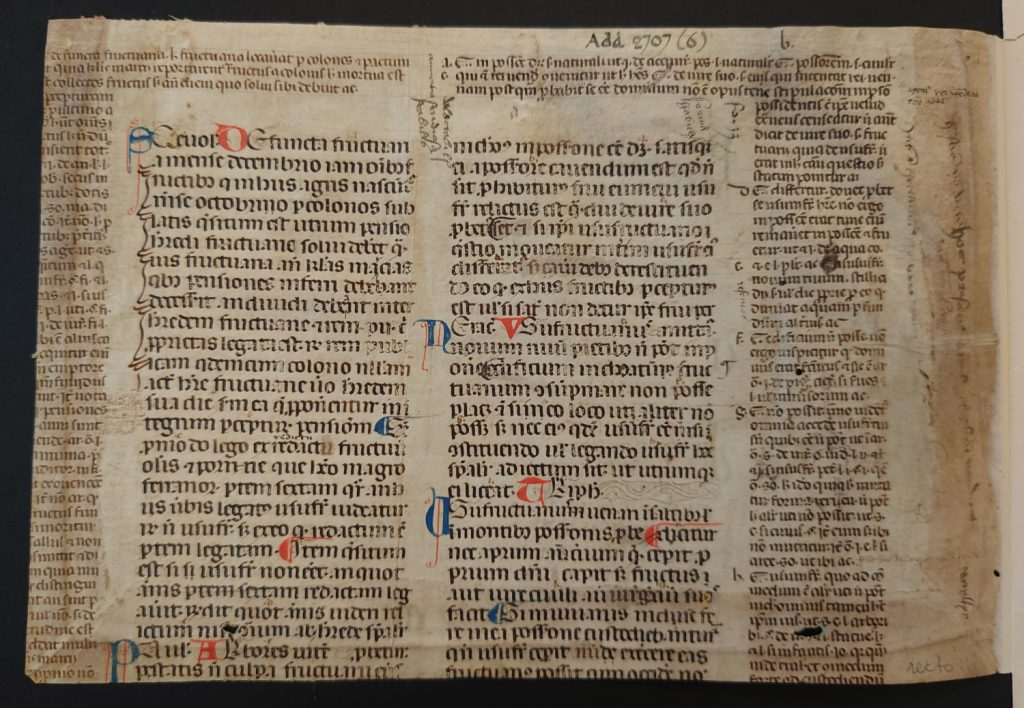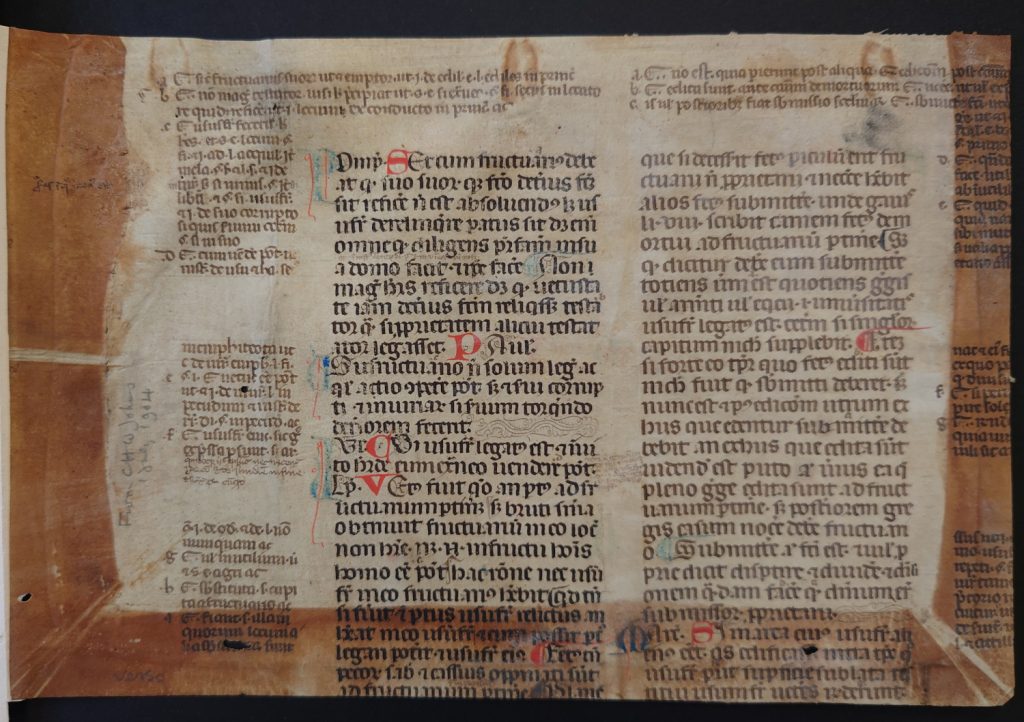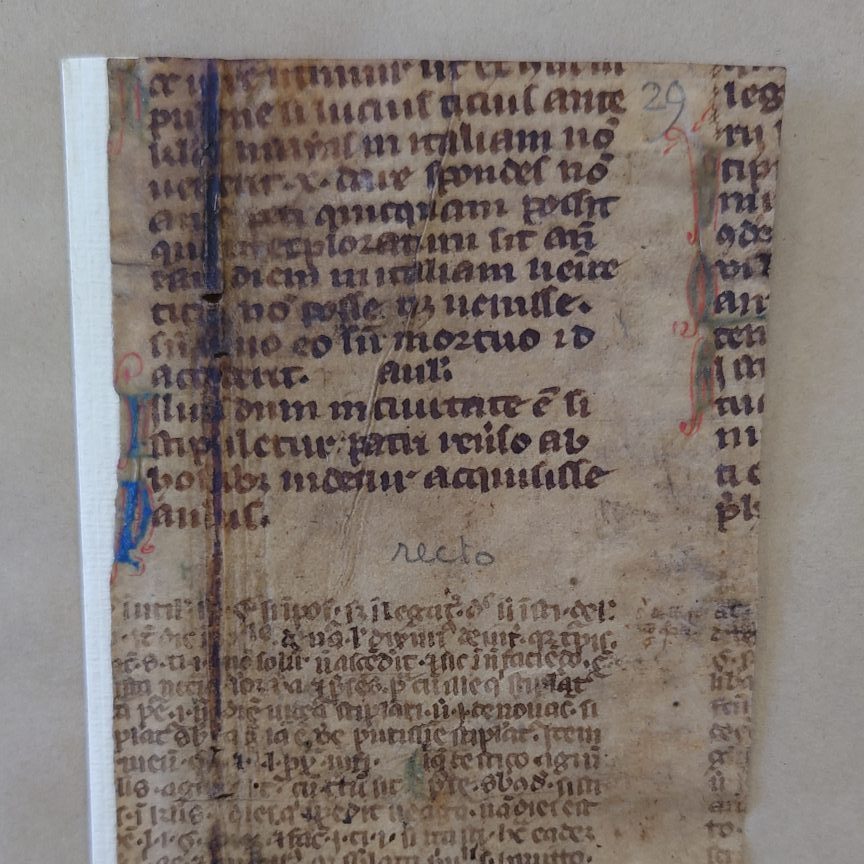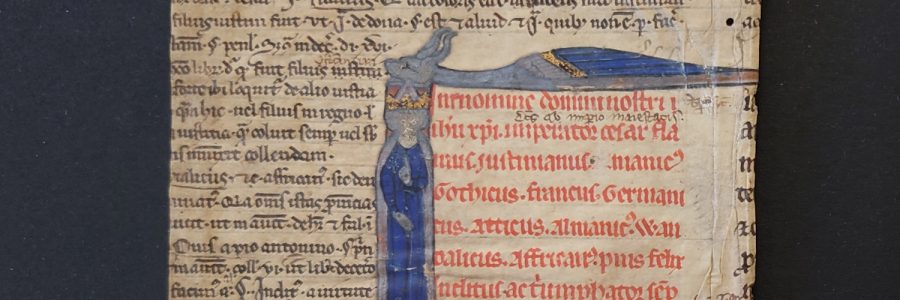
Piecing together the law: fragments of medieval legal manuscripts at Cambridge University Library
This guest post is by Héléna Lagreou, who is studying for her PhD at the University of Cambridge. The work she describes here was conducted in Summer 2022, before the start of a recent project to catalogue fragments of western medieval manuscripts at Cambridge University Library, funded by Fragmentarium. To read more about that initiative, as well as the re-housing, digitisation and conservation of the collections of fragments, please see the Fragments of Medieval Manuscripts project page.
My research centres on the religious framework of public executions during the late Middle Ages. As part of this, I wanted to consult Roman Law manuscripts that would have been used by medieval students as legal textbooks, since I had a rather distant understanding of these books’ form, use and historical value. I contacted Cambridge University Library and a fruitful collaboration followed, which will be the subject of this post.
Medieval manuscripts are often imagined as large, richly illuminated tomes, almost as magical as grimoires. However, other equally curious medieval sources populate the libraries of the world, among them hundreds of fragments of once-complete medieval books. These chopped-up pieces range in size from whole pages to pieces the size of a fingernail — and there are over 2,000 of them at Cambridge University Library, arranged into lots of different collections of various shapes and sizes.
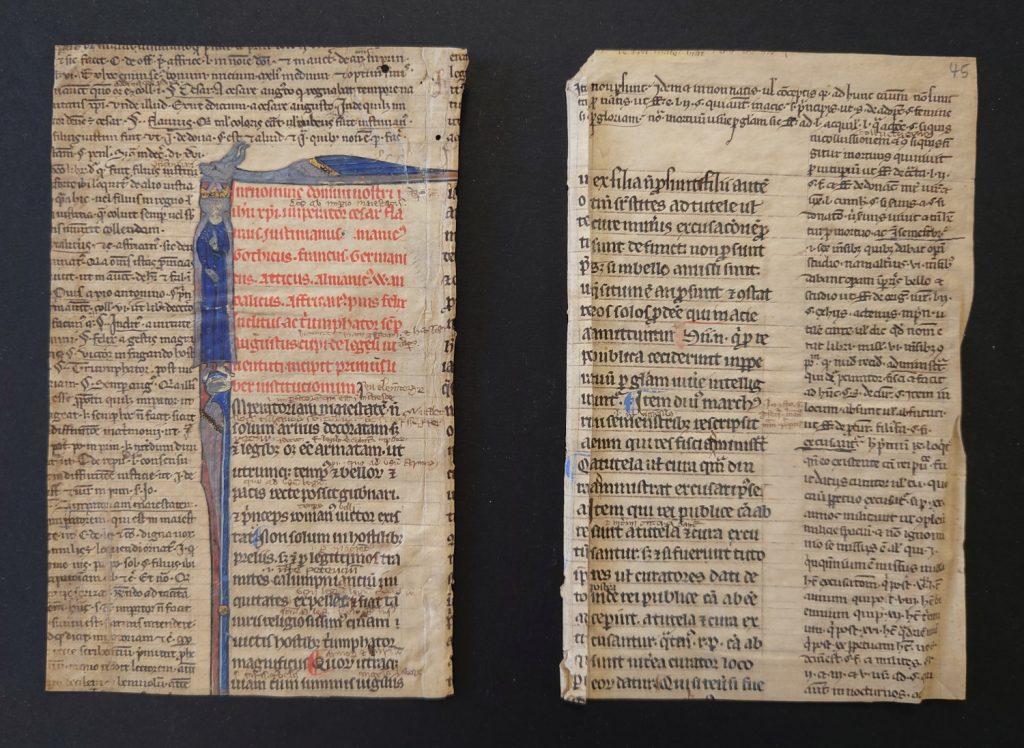
The fragments at Cambridge University Library have only recently been the subject of sustained study. Although some important items are widely known, large sections of the collection are uncatalogued (although Marie Turner’s recent work has made significant progress in rectifying this). Some fragments are kept in boxes or folders, others are encased in glass, and some large leaves are in great albums or portfolios. Many of these housings are a century or more old and some have not lasted well. Their contents are similarly varied: a large quantity are remnants of liturgical manuscripts, but the rest can be difficult to identify. The suspicion was that some, at least, were from legal manuscripts that might be relevant to my research. The challenge was to try to find them…
Fortunately, manuscripts of Roman Law have distinctive features, so it is possible for the well-trained eye to identify likely candidates, even if only small pieces remain. Most have a central section composed of double columns, which is then surrounded by a gloss or commentary. New sections of the text are usually marked by capital letters, written alternately in red or blue ink. Following these visual clues, I took pictures of those fragments that I thought could have come from a legal manuscript, which amounted to a corpus of around 300 items. I then sought to narrow down this group by identifying the text. Using the software Nvivo, which I use to organise images for my research, I went through all of these. My objective was to discern at least three to four consecutive words in the fragment. I would then search for this string of words in texts of Roman Law. In total, I managed positively to identify 11 of them as fragments of legal texts, with a further 25 as possible candidates. Most of those identified were civil law texts; a couple were fragments of canon law, which is in essence the law to which members of the clergy were subject. A list may be downloaded here.
Although these findings are only a small contribution to the University Library’s efforts to sort their collections of fragments, I hope these identifications will help other scholars interested in this subject to expand the materials that are available for their research. Quite simply, a manuscript that hasn’t been catalogued is a manuscript that cannot be discovered by researchers. Identifying these fragments also enhances our understanding of the production and dissemination of legal manuscripts during the Middle Ages: it adds to the information we have about the timing and scale of their production, as well as how they were used — even if that use entailed being cut up as materials for reinforcing the binding of other manuscripts or printed books. That, too, tells us about the importance (or not) of these texts to readers at a particular time, contributes to our conception of manuscripts as dynamic objects, and in some small way adds to the efforts by the University Library to make this part of their collection more accessible to researchers. My hope is that this paper might encourage other medievalists to trawl the collections of fragments in search of as yet unidentified manuscripts.
— Héléna Lagreou


